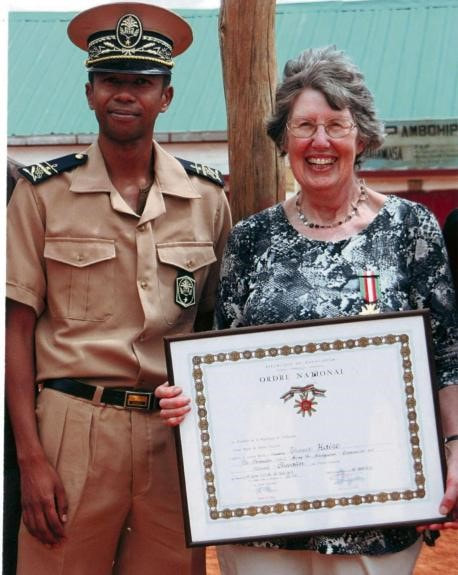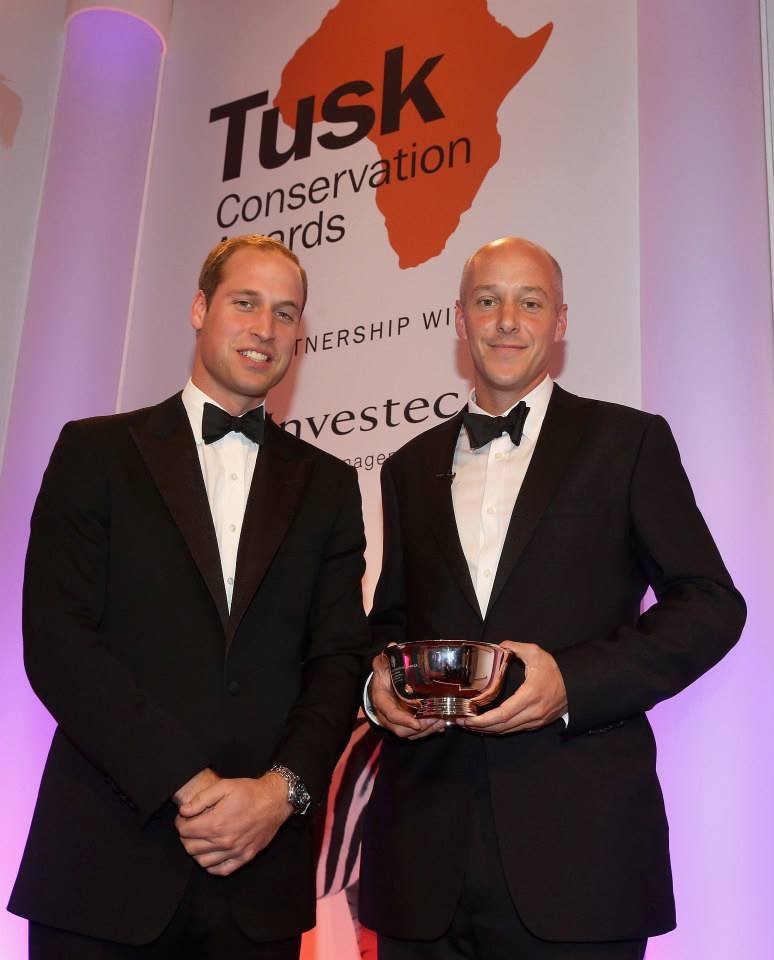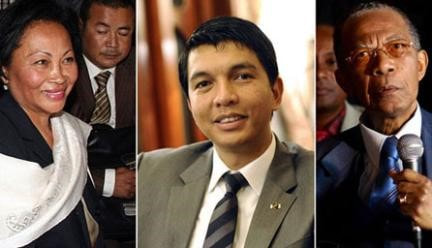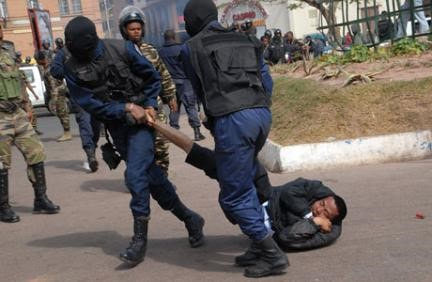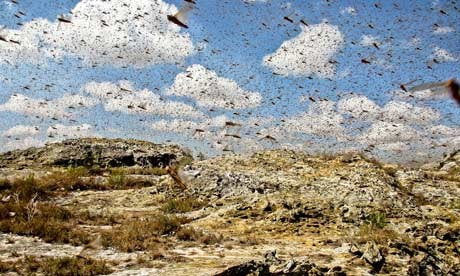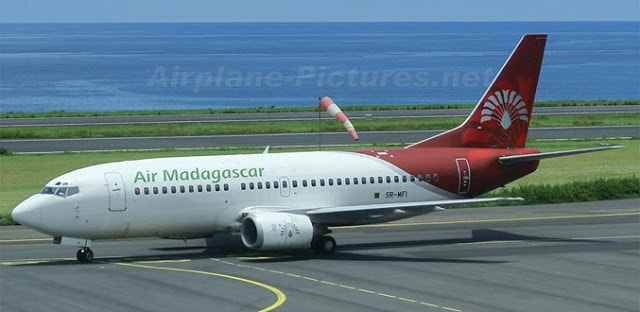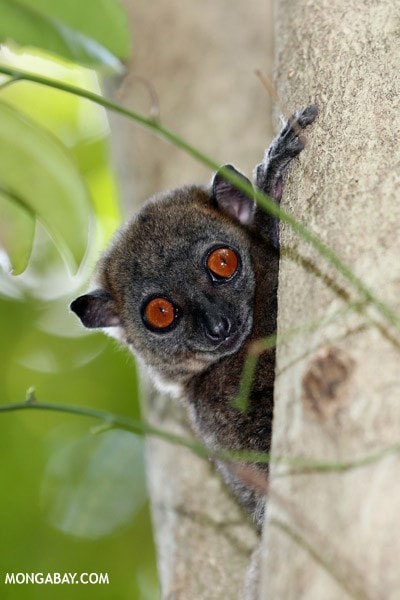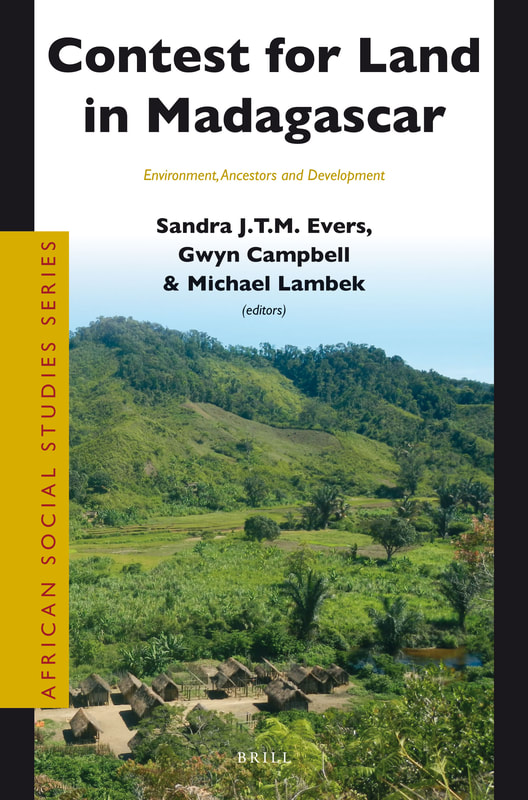Anglo-Malagasy Society Newsletter 81: September 2013 |
| ||
Society activities
The next Society meeting will be a daytime event on Saturday 2nd November with a number of speakers, including our President Sir Mervyn Brown whose 90th birthday this year we will be helping to celebrate. The other talks will be by the naturalist Toby Nowlan and John Brown, with a screening of his award-winning documentary Madagascar, Lemurs and Spies. There will be Malagasy food and a free bar.
You can book places at events via our website, which also has a summary of the talks given for those unable to attend, together with much other useful information. This includes directions to the venue for our meetings, which is the Upper Vestry Hall of St George’s Church, Bloomsbury, London WC1A 2HR, two minutes’ walk from the British Museum.
The next newsletter will be published in December 2013. Please send any material for inclusion as well as any changes in your contact details to the editor Julian Cooke, whose e-mail address is [email protected]. Please also contact the Society if you would like us to publicise your work as an NGO or charity, especially in the run-up to Christmas.
You can book places at events via our website, which also has a summary of the talks given for those unable to attend, together with much other useful information. This includes directions to the venue for our meetings, which is the Upper Vestry Hall of St George’s Church, Bloomsbury, London WC1A 2HR, two minutes’ walk from the British Museum.
The next newsletter will be published in December 2013. Please send any material for inclusion as well as any changes in your contact details to the editor Julian Cooke, whose e-mail address is [email protected]. Please also contact the Society if you would like us to publicise your work as an NGO or charity, especially in the run-up to Christmas.
Society awardsTheresa Haine, one of the Society’s members, received a well-deserved award when she was made a Chevalier de l’Ordre National Malagasy in recognition of her work as co-ordinator of the charity Money for Madagascar.
The surprise award came on Theresa’s latest visit to the island, one of many since first going on a teaching assignment there from 1967 to 1971. |
|
Dr Alasdair Harris, the founder and executive director of Blue Ventures as well as a member of the Society’s committee, was highly commended by the judges for his work nurturing locally-led marine conservation in Madagascar at the inaugural Tusk Conservation Awards, at which Tusk’s president Prince William presented awards.
Alistair said that "We're thrilled that the critical importance of marine protection is being recognised in this way. The Duke and Duchess of Cambridge are both keen SCUBA divers, and are concerned about the grave threats facing Africa's coasts and oceans today. Needless to say, I emphasised the importance of Prince George learning to dive – preferably in Madagascar – as early as possible!" |
Bilateral relations
The UK Embassy in Madagascar moved to its newly-revamped offices on the ninth floor of Tour Zital Ankorondrano in August 2013. The office provides consular assistance such that the Honorary Consulate in Antananarivo has ceased offering separate consular services. The British diplomatic missions in the Indian Ocean are now on Facebook and other social media.
Politics in Madagascar
Elections imminent
After many difficulties and a further postponement, campaigning has started for the presidential election which will take place on 25th October. It is going ahead following the decision to end the contentious candidacies of Andry Rajoelina, the president of the transitional government, Lalao Ravalomanana, wife of the ex-president Marc, and Didier Ratsiraka, another former president.
|
The uncertainty over the election over-shadowed Madagascar’s celebration of its Independence Day on 26th June, when many diplomats did not attend the official ceremony. That day the International Contact Group (GIC) held a meeting at the African Union (AU) in Addis Ababa and subsequently published a communiqué in which it regretted the problems in the electoral process and said that the new Cour Eléctorale Spéciale (CES) should be restructured given its failings in allowing the candidacies. The GIC called on the electoral commission CENIT to agree with the United Nations a new date for the elections, which could no longer be held on the due (and already postponed) date of 24th July; said that the international community would not recognise anyone elected in violation of the decrees of the AU and the Southern African Development Commission (SADC); and called both for a temporary suspension of financial support for the country and the imposition of targeted sanctions against those undermining the electoral process as set out in the original road-map.
|
The GIC also proposed that Joaquim Chissano, the head of the mediation team of the SADC, return to Madagascar on 9th July. An attempt by the Council of Christian Churches, the FFKM,
to arrange a meeting on 4th July between Rajoelina, Ratsiraka, the other former president Albert Zafy and Marc Ravalomanana foundered on the latter’s continued exile. His former head of security, a Gabonese kick-boxing champion Jean-Marc Koumba, came under pressure to quit as bodyguard to Lalao Ravalomanana, who insisted that she would still stand in the elections. The FFKM had proposed a revised road-map and a constitutional referendum in August, which Rajoelina ridiculed; he had also declined to attend the summit. His regime confirmed that Marc Ravalomanana and his son were barred from boarding flights to Antananarivo and the military exercises held at the airport on the day he was due to arrive were entirely coincidental. The FFKM held meetings with Rajoelina, Ratsiraka and Zafy and said it had their agreement to a meeting of the four in a spirit of compromise and reconciliation.
Béatrice Atallah, the head of the electoral commission, met with signatories of the road-map and set a target of 16th July to agree a new date for the elections. Rajoelina said that he still intended to stand while his camp insisted on the full list of forty-one presidential candidates. The issue of who would govern if Rajoelina did stand and therefore stepped down from office remained complex; the parliament passed an act saying it would take over while the Haute Cour Constitutionnelle (HCC) pointed out that in line with the constitution it should be the heads of the Congress and Conseil Supérieur de la Transition (CST) together with the prime minister, Omer Beriziky, whose conflict with Rajoelina continued. Neither he nor Mamy Rakotoarivelo, the head of the Congress, had been candidates while Dolin Rasolosoa, head of the CST, had withdrawn his, such that the triumvirate could act.
Lalao Ravalomanana formed a new party called Zanak'i Dada comprising primarily members of her movement’s TIM party. Zafy called again for a constitutional referendum and made a rather empty threat that if it were not agreed within a fortnight then there would be a series of popular protests.
On 10th July Joaquim Chissano, at the end of his five-day mission to the country which included two days of meetings with the national and international players in the crisis, said that the three contentious candidates had until the end of the month to withdraw before sanctions were imposed on them. The GIC sent a seven-point notification that outlined how Rajoelina should withdraw his candidature unilaterally and unconditionally; should pass an ordinance allowing other candidates to withdraw and to nominate a substitute; and should reform the CES, all to be done by 31st July. The GIC would help draw up a single list of those who either by their actions or inaction were hindering the electoral process and who would be subject to sanctions together with their associates; it would also review the list of 109 members of the regime already under sanction to remove those who were co-operating. Rajoelina refused to accept the ultimatum and went to Tanzania to meet President Jakaya Kikwete, who heads the SADC’s security troika, to discuss the issues. The Ravalomanana camp also rejected the seven points and said that the original forty-one candidates should remain.
On 16th July the electoral commission met with the UN and others from the GIC to agree a revised timetable while a number of ministries and the country’s magistrates put forward proposals to restructure the membership of the CES, which the parliament only considered towards the end of the month.
to arrange a meeting on 4th July between Rajoelina, Ratsiraka, the other former president Albert Zafy and Marc Ravalomanana foundered on the latter’s continued exile. His former head of security, a Gabonese kick-boxing champion Jean-Marc Koumba, came under pressure to quit as bodyguard to Lalao Ravalomanana, who insisted that she would still stand in the elections. The FFKM had proposed a revised road-map and a constitutional referendum in August, which Rajoelina ridiculed; he had also declined to attend the summit. His regime confirmed that Marc Ravalomanana and his son were barred from boarding flights to Antananarivo and the military exercises held at the airport on the day he was due to arrive were entirely coincidental. The FFKM held meetings with Rajoelina, Ratsiraka and Zafy and said it had their agreement to a meeting of the four in a spirit of compromise and reconciliation.
Béatrice Atallah, the head of the electoral commission, met with signatories of the road-map and set a target of 16th July to agree a new date for the elections. Rajoelina said that he still intended to stand while his camp insisted on the full list of forty-one presidential candidates. The issue of who would govern if Rajoelina did stand and therefore stepped down from office remained complex; the parliament passed an act saying it would take over while the Haute Cour Constitutionnelle (HCC) pointed out that in line with the constitution it should be the heads of the Congress and Conseil Supérieur de la Transition (CST) together with the prime minister, Omer Beriziky, whose conflict with Rajoelina continued. Neither he nor Mamy Rakotoarivelo, the head of the Congress, had been candidates while Dolin Rasolosoa, head of the CST, had withdrawn his, such that the triumvirate could act.
Lalao Ravalomanana formed a new party called Zanak'i Dada comprising primarily members of her movement’s TIM party. Zafy called again for a constitutional referendum and made a rather empty threat that if it were not agreed within a fortnight then there would be a series of popular protests.
On 10th July Joaquim Chissano, at the end of his five-day mission to the country which included two days of meetings with the national and international players in the crisis, said that the three contentious candidates had until the end of the month to withdraw before sanctions were imposed on them. The GIC sent a seven-point notification that outlined how Rajoelina should withdraw his candidature unilaterally and unconditionally; should pass an ordinance allowing other candidates to withdraw and to nominate a substitute; and should reform the CES, all to be done by 31st July. The GIC would help draw up a single list of those who either by their actions or inaction were hindering the electoral process and who would be subject to sanctions together with their associates; it would also review the list of 109 members of the regime already under sanction to remove those who were co-operating. Rajoelina refused to accept the ultimatum and went to Tanzania to meet President Jakaya Kikwete, who heads the SADC’s security troika, to discuss the issues. The Ravalomanana camp also rejected the seven points and said that the original forty-one candidates should remain.
On 16th July the electoral commission met with the UN and others from the GIC to agree a revised timetable while a number of ministries and the country’s magistrates put forward proposals to restructure the membership of the CES, which the parliament only considered towards the end of the month.
|
The former prime minister, General Camille Vital, said that he would continue with his candidacy unless Rajoelina withdrew his. Another candidate, Laza Razafiarison, also called for Rajoelina to stand down. He was arrested in dramatic fashion after police used tear-gas to disperse what they said was an illegal rally and was later given a suspended sentence of two months in prison.
|
Rajoelina, as the expiry of the ultimatum approached, said at a passing-out ceremony that the army was the last bastion to protect the country and its sovereignty. However, the Minister of Defence, General Lucien Rakotoarimasy, said that the military were not contemplating any involvement but that there were limits to their patience. In the meantime the French embassy said that its government had placed the Malagasy military under sanction and had suspended any funding of it. The Commission de la Réconciliation Malagasy (CRM) in mid-July pardoned a number of the military who had been convicted after mutinies in 2010, including the former Minister of Defence General Noel Rakotonandrasana.
Catherine Ashton, the High Representative of the EU on foreign affairs, announced at the beginning of August that the ultimatum would be extended for a final two weeks before sanctions were imposed, while also offering renewed EU support if the elections were held by mid-November. Chissano welcomed the steps to reform the CES but said he awaited the new list of candidates.
Catherine Ashton, the High Representative of the EU on foreign affairs, announced at the beginning of August that the ultimatum would be extended for a final two weeks before sanctions were imposed, while also offering renewed EU support if the elections were held by mid-November. Chissano welcomed the steps to reform the CES but said he awaited the new list of candidates.
Positive developments
There was then, at last, a series of positive developments. The Council of Ministers decreed that candidates could withdraw and nominate a replacement and also announced the members of the reconstituted CES, which said that it would only take into account legal and not political considerations. The CES elected as its new president François Rakotozafy, nominated by fellow magistrates and not by any party.
The CES cut itself off from all communication to consider the list of candidates and announced on 17th August that it had invalidated the applications of Rajoelina, Ravalomanana and Ratsiraka as the first had submitted his too late while the others failed on the requirement to have been resident for six months (although Camille Vital’s residency as ambassador in Geneva was accepted); five other candidates were excluded. The CES gave three days for the excluded candidates to appeal and for others to retire.
The movements of the three excluded candidates were taken a little by surprise, initially insisting that their candidates would continue, and some railed against interference from the international community, which understandably welcomed the decision of the CES. There was a degree of speculation of who might be nominated as a substitute. In the end only the Minister of Finance Hery Rajaonarimampianina, who had lost out to Edgard Razafindravahy in the bid to be the special delegate running the capital and was said to have the support of Rajoelina, joined the list which now comprised a still-extensive thirty-three candidates.
On 22nd August the electoral commission announced that the presidential election would be held on 25th October with a second round if there were no outright winner on 20th December, when the parliamentary poll would take place; the municipal elections were postponed to 2014. One concern was that the elections would take place in the rainy season; another was whether they would be representative. Rajoelina accepted the new proposals and his movement had the benefit of having three potential candidates, although some difficulty in choosing between them; the Ravalomanana and Ratsiraka camps failed to nominate a substitute and would have no candidate – the CES rejected a request by Lalao Ravalomanana to change her position and choose someone in her place. Rajoelina will also continue as transitional president. There was a delay to agreeing replacements for the four ministers who were required to step down from their positions.
The AU lifted the sanctions against members of the regime first imposed in March 2010, saying that the circumstances had now changed materially while reserving the right to impose fresh sanctions on those obstructing the electoral process. The AU said it would look to re-instate Madagascar once the new president was sworn in.
The electoral commission CENIT called in early September for a further 7bn ariary (£2m) to help secure the elections. There was a delay in the printing of ballot papers by South Africa while an estimated 400,000 voters still need to have identity cards issued to allow them to participate. The electoral commission also proposed that each candidate will have 3 ½ minutes of free air time in the first half of the campaign then 15 minutes in the second half, although there were some concerns that the wealthier candidates would have an advantage with paid-for space (as well as concerns over the source of the funds at their disposal). A number of candidates were accused of starting to campaign before the official date and there was much debate on whom the Ravalomanana movement might favour as well as whether the supporters of the regime would continue to back Edgard Razafindravahy, who had been chosen by Rajoelina’s TGV party in April.
Didier Ratsiraka expressed his concerns on how well the elections would go and has generally kept a low profile, although in a TV interview he said that France had sought his support to depose Ravaolomanana in 2009 and he had refused an inducement of €1.5m to sign the road-map. He also continued to support a summit of the four main protagonists and a return from exile of Ravalomanana. Albert Zafy was more vocal, calling for the dismissal of the prime minister, whom he had originally nominated. The FFKM seemed to accept that its role as a mediator was over for now.
On 16th September Marc Ravalomanana announced his support for one of the candidates,Dr Jean-Louis Robinson, who had been first Minister of Health then Minister of Sport and Culture when he was president. Rajoelina went to New York to attend the General Assembly of the United Nations, where he criticised the inflexibility of the international community and sought to contrast its actions in Madagascar with its support for popular movements elsewhere in the world. He also said he planned to be active over the next five years in Madagascar in preparing a programme for a further fifteen years.
The campaign started officially on 24th September and, not surprisingly, has been lively. There is still a degree of tension in the country. During September there have been a series of small explosions, with one bomb-maker killed by the premature explosion of his own device.
The CES cut itself off from all communication to consider the list of candidates and announced on 17th August that it had invalidated the applications of Rajoelina, Ravalomanana and Ratsiraka as the first had submitted his too late while the others failed on the requirement to have been resident for six months (although Camille Vital’s residency as ambassador in Geneva was accepted); five other candidates were excluded. The CES gave three days for the excluded candidates to appeal and for others to retire.
The movements of the three excluded candidates were taken a little by surprise, initially insisting that their candidates would continue, and some railed against interference from the international community, which understandably welcomed the decision of the CES. There was a degree of speculation of who might be nominated as a substitute. In the end only the Minister of Finance Hery Rajaonarimampianina, who had lost out to Edgard Razafindravahy in the bid to be the special delegate running the capital and was said to have the support of Rajoelina, joined the list which now comprised a still-extensive thirty-three candidates.
On 22nd August the electoral commission announced that the presidential election would be held on 25th October with a second round if there were no outright winner on 20th December, when the parliamentary poll would take place; the municipal elections were postponed to 2014. One concern was that the elections would take place in the rainy season; another was whether they would be representative. Rajoelina accepted the new proposals and his movement had the benefit of having three potential candidates, although some difficulty in choosing between them; the Ravalomanana and Ratsiraka camps failed to nominate a substitute and would have no candidate – the CES rejected a request by Lalao Ravalomanana to change her position and choose someone in her place. Rajoelina will also continue as transitional president. There was a delay to agreeing replacements for the four ministers who were required to step down from their positions.
The AU lifted the sanctions against members of the regime first imposed in March 2010, saying that the circumstances had now changed materially while reserving the right to impose fresh sanctions on those obstructing the electoral process. The AU said it would look to re-instate Madagascar once the new president was sworn in.
The electoral commission CENIT called in early September for a further 7bn ariary (£2m) to help secure the elections. There was a delay in the printing of ballot papers by South Africa while an estimated 400,000 voters still need to have identity cards issued to allow them to participate. The electoral commission also proposed that each candidate will have 3 ½ minutes of free air time in the first half of the campaign then 15 minutes in the second half, although there were some concerns that the wealthier candidates would have an advantage with paid-for space (as well as concerns over the source of the funds at their disposal). A number of candidates were accused of starting to campaign before the official date and there was much debate on whom the Ravalomanana movement might favour as well as whether the supporters of the regime would continue to back Edgard Razafindravahy, who had been chosen by Rajoelina’s TGV party in April.
Didier Ratsiraka expressed his concerns on how well the elections would go and has generally kept a low profile, although in a TV interview he said that France had sought his support to depose Ravaolomanana in 2009 and he had refused an inducement of €1.5m to sign the road-map. He also continued to support a summit of the four main protagonists and a return from exile of Ravalomanana. Albert Zafy was more vocal, calling for the dismissal of the prime minister, whom he had originally nominated. The FFKM seemed to accept that its role as a mediator was over for now.
On 16th September Marc Ravalomanana announced his support for one of the candidates,Dr Jean-Louis Robinson, who had been first Minister of Health then Minister of Sport and Culture when he was president. Rajoelina went to New York to attend the General Assembly of the United Nations, where he criticised the inflexibility of the international community and sought to contrast its actions in Madagascar with its support for popular movements elsewhere in the world. He also said he planned to be active over the next five years in Madagascar in preparing a programme for a further fifteen years.
The campaign started officially on 24th September and, not surprisingly, has been lively. There is still a degree of tension in the country. During September there have been a series of small explosions, with one bomb-maker killed by the premature explosion of his own device.
Economic and social matters
Finance, growth and aid
The African Economic Outlook 2013 published in July estimated GDP growth in Madagascar of 1.9% in 2012 after 1.6% in 2011. It forecast improved rates of 3% in 2013 and 4%in 2014 helped by the resumption of international aid, although this was based on the earlier timetable for elections. Mining industries are expected to be the main driver of growth with a further benefit from improvements in tourism and construction.
The Coca-Cola Africa Foundation has agreed to provide $4.6m to fund water and sanitation projects in four African countries, including Madagascar where it will assist JIRAMA in the poorer parts of Antananarivo.
Companies that had withheld tax payments to the government in an escrow account from June pending political change resumed their contributions in August.
The Coca-Cola Africa Foundation has agreed to provide $4.6m to fund water and sanitation projects in four African countries, including Madagascar where it will assist JIRAMA in the poorer parts of Antananarivo.
Companies that had withheld tax payments to the government in an escrow account from June pending political change resumed their contributions in August.
Locusts
|
The UN Food and Agricultural Organisation, which had called first in March then in June for $22m to deal with the serious threat from plagues of locusts, had some success with a grant from the World Bank of $10m in July that took the total raised to $16m. The amount has risen further to $23m although the total needed for a three-year campaign is $41m. The expensive air operations started in August and in September in earnest.
In a separate move to help food security the FAO in July announced EU funding of €12.5m over three years that will help 150,000 households to improve crop production and storage as well as including health education to reduce the severe level of malnutrition in children under five. |
Insecurity
There has been continued banditry in the country with a number of incidents in which a large number of zebu-rustlers have been killed.
Insecurity in the region was one reason, together with financial difficulties, that were said to explain a level of school absenteeism over 20% in and around Fianarantsoa.
Insecurity in the region was one reason, together with financial difficulties, that were said to explain a level of school absenteeism over 20% in and around Fianarantsoa.
Health and education
Blue Ventures has launched a new community health programme in the Belo sur Mer area on Madagascar's west coast, replicating its award-winning Population-Health-Environment (PHE) approach beyond the Velondriake area. The programme has reached a total of 20,000 people across 50 remote villages.
The incidence of AIDS in Madagascar, while still very low, has increased to 0.4% according to the UNDP with some 42,000 people affected, primarily in vulnerable groups.
A World Bank report published in June, based on research in April-May 2012, showed the problems in the primary school sector. The impact of the crisis and budget cuts led to a sharp drop in the numbers of pupils registered, leaving an estimated 600,000 who had missed out on an education over the four years. Not only were fewer enrolled but more were leaving early and standards of teaching were lower, attributed in part to the recruitment of not-fully qualified teachers after the reforms of 2003. Parents were still trying to afford schooling; their spending had increased by a third between 2005 and 2010 and by nearly half in rural areas, in part as they supplemented the low wages of teachers. The economic crisis meant that more children were working outside school, the proportion aged six to ten doing so before and after lessons having increased from 39% in 2005 to 49% in 2010.
A report from the International Labour Organization said that 28% of children aged five to seventeen in Madagascar were working, and that 86,000 or nearly a fifth of those in the south-west were employed in mining for sapphires and other products.
The incidence of AIDS in Madagascar, while still very low, has increased to 0.4% according to the UNDP with some 42,000 people affected, primarily in vulnerable groups.
A World Bank report published in June, based on research in April-May 2012, showed the problems in the primary school sector. The impact of the crisis and budget cuts led to a sharp drop in the numbers of pupils registered, leaving an estimated 600,000 who had missed out on an education over the four years. Not only were fewer enrolled but more were leaving early and standards of teaching were lower, attributed in part to the recruitment of not-fully qualified teachers after the reforms of 2003. Parents were still trying to afford schooling; their spending had increased by a third between 2005 and 2010 and by nearly half in rural areas, in part as they supplemented the low wages of teachers. The economic crisis meant that more children were working outside school, the proportion aged six to ten doing so before and after lessons having increased from 39% in 2005 to 49% in 2010.
A report from the International Labour Organization said that 28% of children aged five to seventeen in Madagascar were working, and that 86,000 or nearly a fifth of those in the south-west were employed in mining for sapphires and other products.
Corruption
A survey by Transparency International suggested that corruption had increased further in recent years, with over half of the respondents having paid a bribe to obtain or improve a service and a third being asked for one. State inspectors calculated that at least 30 billion ariary (£100m) had been diverted from public funds between 2009 and 2012; the figure was almost certainly higher as they were not given access to all departments.
Tourism
|
The European Aviation Safety Agency (EASA) has now allowed one of the two Boeings B737 of Air Madagascar to re-enter European airspace, allowing the airline to resume its flights to Paris.
The new airport security tax equivalent to $17 for international flights and $3 for domestic ones has been discontinued with the intention now to levy passengers via their tickets. |
The United Nations Special Rapporteur Najat Maalla M’jid, after a visit in July that found increased levels of child exploitation and sex tourism since 2009, called on the government to enforce the laws in place and to provide sufficient funds for social services to help victims.
Minerals
There has been an increased amount of corporate activity in the energy and mining sectors which might be indicative of renewed interest as an end to the political crisis would create greater certainty and generate further investment – although, by definition, for each buyer there is a seller. There have also been accusations in Madagascar that the international community drove the election timetable to open the way to further exploitation of mineral wealth.
In early July Oyster Oil & Gas announced that it would buy from a fellow Canadian company Candax its 10% share on the offshore oil Block 1101, which is operated by Afren PLC, while the AIM-listed Tower Resources plc acquired the private company Wilton Petroleum Limited for a little under $5m. This gave a 20% carried interest in the onshore Marovoay Block 2102 operated by Ophir Energy plc, where the first exploration drilling was due by April 2014. However, Tower later postponed the purchase date when Ophir indicated that it would not start drilling by then. The Hong Kong-listed Hoifu Energy Group Limited completed the acquisition of the Madagascar Northern Petroleum Company which owns 100% of the exploration rights in Block 2101, where it had yet to start development.
In September another AIM-listed company, Bushveld Minerals Limited, said that it had secured effective control of the Australian company Lemur Resources following its takeover bid in May, which valued the coal miner at £12.3m.
In August, however, World Titanium Resources Ltd announced that the Chinese firm Sichuan Lomon Titanium Co. had decided not to pursue its joint venture plans following the Australian company’s recent capital raising and management change. Lomon had intended to contribute the first $200m of expenditure in exchange for a 50% share in the Ranobe ilmenite mine near Toliara, which has an annual production target of 800,000 tonnes.
In existing businesses, in July Malagasy Minerals Ltd said it had identified a sizeable molybdenum target at its Ampanihy project while Energizer Resources said it had achieved a purity level of over 99.9% in carbon at the Molo graphite deposit in southern Madagascar, in which it has a 75% share in a joint venture with Malagasy Minerals.
The AIM-listed company StratMin Global Resources said in August that it was now looking to improve the quality of the graphite it was starting to produce.
Tullow Oil PLC said it was confident of finding oil at its two blocks in the Morondova basin and near Berenty when it starts drilling in 2014. Tullow has operated in Madagascar since 2006 and has spent some $30m to date. It had a tremendous run of new discoveries until recently.
In early July Oyster Oil & Gas announced that it would buy from a fellow Canadian company Candax its 10% share on the offshore oil Block 1101, which is operated by Afren PLC, while the AIM-listed Tower Resources plc acquired the private company Wilton Petroleum Limited for a little under $5m. This gave a 20% carried interest in the onshore Marovoay Block 2102 operated by Ophir Energy plc, where the first exploration drilling was due by April 2014. However, Tower later postponed the purchase date when Ophir indicated that it would not start drilling by then. The Hong Kong-listed Hoifu Energy Group Limited completed the acquisition of the Madagascar Northern Petroleum Company which owns 100% of the exploration rights in Block 2101, where it had yet to start development.
In September another AIM-listed company, Bushveld Minerals Limited, said that it had secured effective control of the Australian company Lemur Resources following its takeover bid in May, which valued the coal miner at £12.3m.
In August, however, World Titanium Resources Ltd announced that the Chinese firm Sichuan Lomon Titanium Co. had decided not to pursue its joint venture plans following the Australian company’s recent capital raising and management change. Lomon had intended to contribute the first $200m of expenditure in exchange for a 50% share in the Ranobe ilmenite mine near Toliara, which has an annual production target of 800,000 tonnes.
In existing businesses, in July Malagasy Minerals Ltd said it had identified a sizeable molybdenum target at its Ampanihy project while Energizer Resources said it had achieved a purity level of over 99.9% in carbon at the Molo graphite deposit in southern Madagascar, in which it has a 75% share in a joint venture with Malagasy Minerals.
The AIM-listed company StratMin Global Resources said in August that it was now looking to improve the quality of the graphite it was starting to produce.
Tullow Oil PLC said it was confident of finding oil at its two blocks in the Morondova basin and near Berenty when it starts drilling in 2014. Tullow has operated in Madagascar since 2006 and has spent some $30m to date. It had a tremendous run of new discoveries until recently.
Wildlife and conservation
Forests
The illegal logging of precious woods appears to continue unabated and perhaps even at a higher level, which might be expected if the participants expect some return to relative order after the elections.
The supply of charcoal, which accounts for the loss of an estimated 0.5% of the country’s forests each year, is expected to be insufficient to meet demand in certain regions by 2030 according to a report by the WWF.
The Wildlife Conservation Society (WCS) announced in September that the forest carbon credits from its Makira scheme had been made available for sale. The scheme aims to protect 400,000 ha of forest and its associated wildlife as well as benefit local communities who will receive as half of the net revenue carbon sales will be allocated to various projects.
The supply of charcoal, which accounts for the loss of an estimated 0.5% of the country’s forests each year, is expected to be insufficient to meet demand in certain regions by 2030 according to a report by the WWF.
The Wildlife Conservation Society (WCS) announced in September that the forest carbon credits from its Makira scheme had been made available for sale. The scheme aims to protect 400,000 ha of forest and its associated wildlife as well as benefit local communities who will receive as half of the net revenue carbon sales will be allocated to various projects.
Species
|
In a study published in PLoS ONE, Researchers from Bristol University, Bristol Zoo and Torino University showed how the little-known nocturnal Sahamalaza sportive lemur (Lepilemur sahamalazensis) responded to the alarm calls of various animals that share its forest home and face similar threats, such as the crested coua, the Madagascar magpie-robin, and the blue-eyed black lemur.
There was another case of the confirmation of a separate species of lemur with a report in the journal Molecular Phylogenetics and Evolution. The Lavasoa Dwarf Lemur (Cheirogaleus lavasoensis) which inhabits three isolated forest fragments in the Lavasoa mountains in southern Madagascar was first discovered in 2001, but genetic analysis has only now revealed it to be distinct from the closely-related Cheirogaleus crossleyi. Another new species is a cave fish from an isolated karst sinkhole in south-western Madagascar, Typhleotris mararybe. The name commemorates a mystery illness that affected the field team when diving in the Grotte de Vitane on the arid coastal plain west of the Mahafaly plateau. Madagascar’s four cave-inhabiting fishes from the country are all gobioids but represent two separate evolutionary lineages. |
A study published in the Proceedings of the Royal Society B has helped to confirm that the rate at which new species arise on Madagascar, having boomed when it split off from what is now Africa 90m years ago, has slowed down since in line with the theory of ‘adaptive radiation’, which holds the rate at which new species arise is constrained by the number of ecological niches available for them to fill. Daniel Scantlebury of the University of Rochester examined seven well-characterized vertebrate clades (groups of species sharing a common ancestor) that are only found on Madagascar. He fitted variations of the two different models (constant or declining diversification) to the phylogenetic tree for each clade which indicates that the evolutionary diversification over the recent history of Madagascar is the slowest it has been.
Review
The latest edition of the journal of Madagascar Conservation & Development, Volume 8 Issue 1, was published in July. There are articles on mangroves, primate diversity, non-flying mammalian fauna and on Partnership in practice: making conservation work at Bezà Mahafaly by Alison Richard and Joelisoa Ratsirarson.
The edition also has an obituary for Bob Dewar, who died only a few months before the publication of an article in the Proceedings of the Natural Academy of Sciences that radically alters what was assumed to be the date of the earliest human arrival in Madagascar. Past research on Madagascar indicated that village communities were established about 500AD by people of both Indonesian and East African heritage, while evidence of earlier visits was scattered and contentious. Recent archaeological excavations in northern Madagascar have provided evidence of occupational sites with microlithic stone technologies related to foraging for forest and coastal resources. A forager occupation of one site dates to earlier than 2000BC, doubling the length of Madagascar’s known occupational history.
Dewar, R. E. et al 2013: Stone tools and foraging in northern Madagascar challenge Holocene extinction models. PNAS 2013 110 (31) 12583-12588.
The edition also has an obituary for Bob Dewar, who died only a few months before the publication of an article in the Proceedings of the Natural Academy of Sciences that radically alters what was assumed to be the date of the earliest human arrival in Madagascar. Past research on Madagascar indicated that village communities were established about 500AD by people of both Indonesian and East African heritage, while evidence of earlier visits was scattered and contentious. Recent archaeological excavations in northern Madagascar have provided evidence of occupational sites with microlithic stone technologies related to foraging for forest and coastal resources. A forager occupation of one site dates to earlier than 2000BC, doubling the length of Madagascar’s known occupational history.
Dewar, R. E. et al 2013: Stone tools and foraging in northern Madagascar challenge Holocene extinction models. PNAS 2013 110 (31) 12583-12588.
Publications
|
A recently-published book, Contest for Land in Madagascar, provides a collection of essays with a focus on land as the pivotal factor underlying the economic, social and religious structures of Malagasy society and its relationship with outsiders, as well as considering elements such as the Daewoo land lease issue on the political crisis.
It is edited by Sandra Evers, Gwyn Campbell and Michael Lambek. |
Charities and NGOs
There is a UK charity called Doctors for Madagascar, which is associated with Ärzte für Madagaskar e.V. set up by German doctors to provide medical aid to the island. The team has opened a clinic and sent a container of equipment website, and has been raising funds to build a new hospital complex that will be able to help many more people with grants of over €100,000 euros from two German foundations. The UK branch will largely manage its own projects, starting with the establishment of a local FM radio station run through the hospital, broadcasting programmes on health, agriculture and the environment, following on the work of the Andrew Lees Trust. There is more information at www.doctorsformadagascar.com while their page at www.facebook.com/doctorsformadagascar, has more up-to-date news.
The Scout expedition to Madagascar returned in mid-August after a successful four-week trip to the country which involved the building of new community facilities; there are some details on their website.
A new NGO called Pink Forest that has been set up by four Swiss conservationists in Madagascar plans to help protect the western dry forests of Madagascar by promoting the use of the fruit of baobab trees for foods and cosmetics, given its high nutritional value. They have an informative website at pinkforest.org as well as a crowd-funding page to help raise its target of $30,000.
The Scout expedition to Madagascar returned in mid-August after a successful four-week trip to the country which involved the building of new community facilities; there are some details on their website.
A new NGO called Pink Forest that has been set up by four Swiss conservationists in Madagascar plans to help protect the western dry forests of Madagascar by promoting the use of the fruit of baobab trees for foods and cosmetics, given its high nutritional value. They have an informative website at pinkforest.org as well as a crowd-funding page to help raise its target of $30,000.
